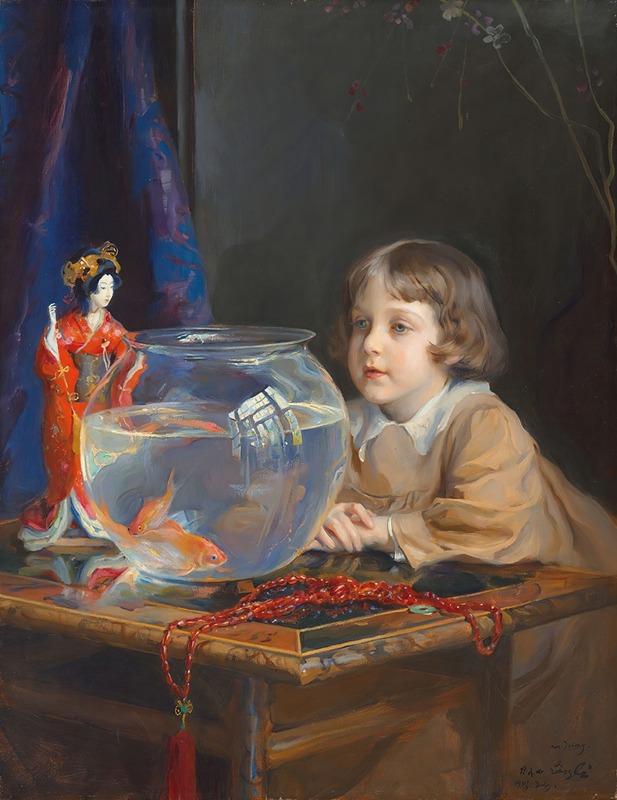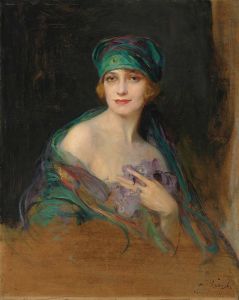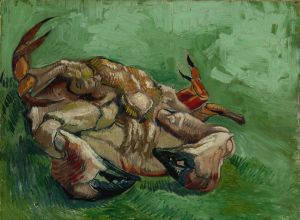
John de Laszlo and a Goldfish Bowl
A hand-painted replica of Philip Alexius de László’s masterpiece John de Laszlo and a Goldfish Bowl, meticulously crafted by professional artists to capture the true essence of the original. Each piece is created with museum-quality canvas and rare mineral pigments, carefully painted by experienced artists with delicate brushstrokes and rich, layered colors to perfectly recreate the texture of the original artwork. Unlike machine-printed reproductions, this hand-painted version brings the painting to life, infused with the artist’s emotions and skill in every stroke. Whether for personal collection or home decoration, it instantly elevates the artistic atmosphere of any space.
Philip Alexius de László was a renowned Anglo-Hungarian painter known for his portraits of royal and aristocratic figures. One of his notable works is "John de Laszlo and a Goldfish Bowl," which captures a personal and intimate moment involving his son, John de László. This painting is a testament to de László's skill in portraiture and his ability to convey warmth and personality through his art.
The painting features John de László, the artist's son, who is depicted with a goldfish bowl. The composition is both charming and engaging, showcasing the young boy's curiosity and innocence. De László's use of light and color in this work is particularly noteworthy, as it highlights the translucence of the water in the bowl and the shimmering scales of the goldfish, creating a vivid and lifelike representation. The attention to detail in the textures and reflections demonstrates de László's technical proficiency and his keen observational skills.
Philip de László was born in Budapest in 1869 and later became a British citizen. He was a prolific artist, having painted over 4,000 portraits during his career. His subjects included many prominent figures of his time, such as kings, queens, and other members of the European nobility. Despite his success in painting the elite, de László also captured more personal and familial scenes, as evidenced by "John de Laszlo and a Goldfish Bowl."
The painting not only reflects de László's artistic talent but also provides insight into his personal life. It suggests a tender relationship between the artist and his son, capturing a moment of childhood wonder and exploration. This personal connection adds depth to the painting, making it more than just a portrait; it becomes a narrative of familial affection and the simple joys of childhood.
De László's style is often compared to that of John Singer Sargent, another prominent portrait artist of the time. Both artists shared a similar approach to capturing the essence of their subjects with a focus on realism and detail. However, de László's work is distinguished by its warmth and the subtle emotional undertones present in his portraits.
"John de Laszlo and a Goldfish Bowl" is an example of de László's ability to blend technical skill with emotional depth. The painting is a celebration of childhood and the intimate bonds within a family, rendered with the precision and grace that characterize de László's oeuvre. It remains a cherished piece, reflecting both the artist's personal life and his mastery of portraiture.
Today, Philip de László's works are held in high esteem and can be found in various prestigious collections and museums around the world. His legacy as one of the leading portrait painters of his era continues to be recognized and appreciated by art historians and enthusiasts alike.


















